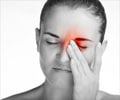
‘Although cell types between mice and humans are often preserved, they found that certain genes involved in pain are expressed in different subgroups of cells in mice against humans.’
Tweet it Now
“Very few pain therapeutics have made it to the clinic, despite strong efficacy in animal models, so our goal was to analyze human tissue to look for new targets for headache and facial pain treatment,” said William Renthal, MD, PhD, of the Department of Neurology at the Brigham. “We now have an atlas of the genes that are expressed in each of the cell types in the TG, the key relay center for migraine and facial pain, and we are now using this tool to identify potential therapeutic targets that are selectively expressed in cell types that drive head pain. We believe this will lead to more precise medicines without as many side effects.”In addition to analyzing the TG of four human donors, the researchers examined two mouse models of headache. Although cell types between mice and humans are often preserved, they found that certain genes involved in pain are expressed in different subgroups of cells in mice against humans. This gave the researchers new ideas on which cells should be study further.
“A major value of this study is that it wasn’t limited to one specific cell-type or branch of the trigeminal ganglion,” said Jochen K. Lennerz, MD, PhD, of the Center for Integrated Diagnostics in the Department of Pathology at MGH. Lennerz’s lab performed the complex tissue-harvesting procedures needed to extract TG, which is located inside the skull but contains neurons that stimulate the teeth, eyes and other facial systems. “We included all of the cells that make up the TG,” he said. “This was a very holistic approach which has resulted in an amazing compendium that researchers can look at from all perspectives and specialties. It may not only be neurons we are looking for when identifying biomolecules as therapeutic targets.”
The information in the researchers’ atlas, which is generally available online, will trigger new investigations based on the molecular nature of different types of pain, such as tooth pain. It may also shed light on how to give treatment for headaches beyond migraine, including post-traumatic headache or cluster headache.
Going forward, the researchers plan to improve the current atlas by deploying additional human tissue. Through genetic therapies, they hope atlas will help researchers target specific cells they have identified and develop more selective pain treatment methods.
Advertisement
Renthal received a research funding from Teva Pharmaceuticals and is a member of the AbbVie Scientific Advisory Board and funding for this work was primarily provided by the Migraine Research Foundation and the Burroughs Wellcome Fund. Researchers are also supported by grants from the National Institute of Neurological Disorders and Stroke and National Institute of Drug Abuse, and by Teva Pharmaceuticals and Brigham and Women’s Hospital Women’s Brain Initiative and Neurotechnology studio.
Advertisement
Source-Medindia











